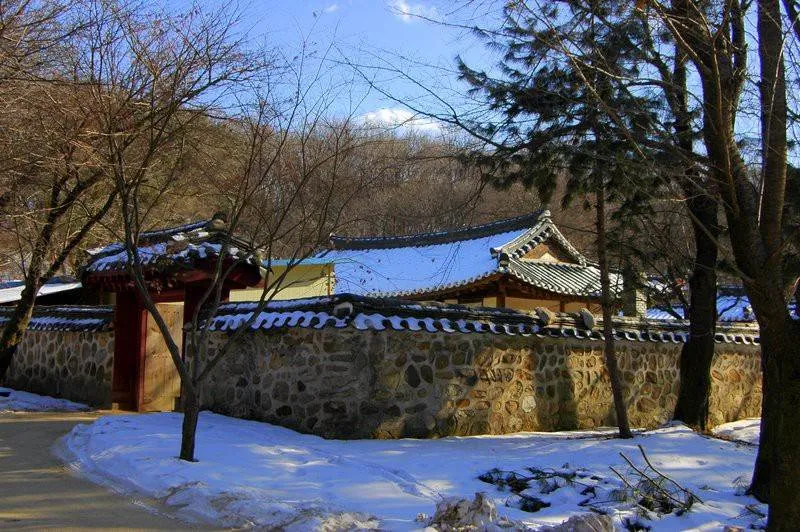
LIKE the other Joseon Dynasty tombs in and around Seoul, Wonjong Jangneung (김포 장릉) honors the royalty in a way that UNESCO considers a World Heritage Site. As usual, there’s more court intrigue and drama than the signs on site indicate — the man who we call King Wonjong, for example, was little more than a prince who inherited a posthumous title from his son. More on that in a minute.
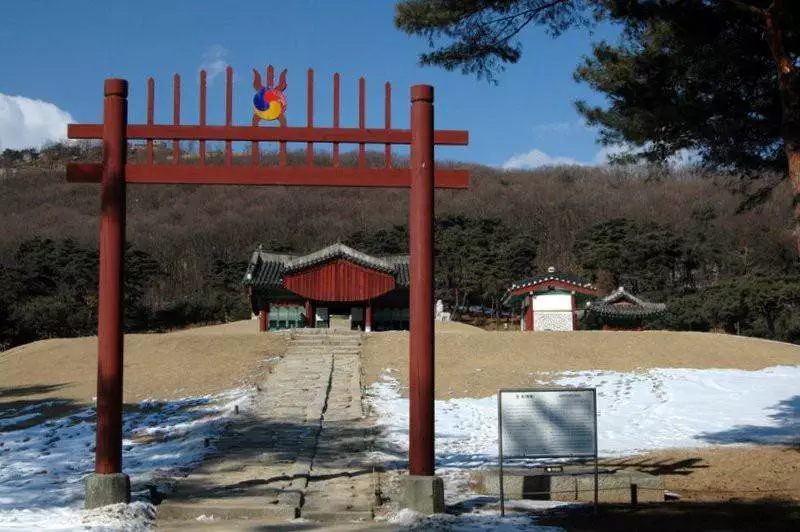
One design element you’ll see at every Joseon Dynasty tomb — the hongsalmun (홍살문), or the red spiky gate signifying this to be the beginning of the sacred area. As usual, the tombs rest behind the next building:

The Jeongjagak (정자각) shrine used for ceremonial purposes. These are periodically touched up by the powers that be, but all have essentially the same look. Most are empty inside, however.
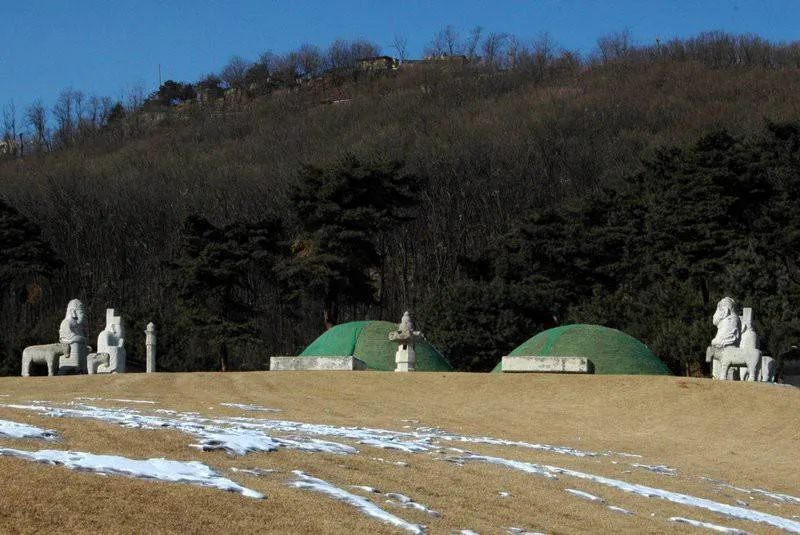
A look at the tombs — this being winter time, the mounds are covered with some kind of plastic netting to help protect them.
Who’s in the other one? An excellent question. Let’s rewind the time machine to Prince Jeongwon’s birth in 1580 — despite being an illegitimate child of King Seonjo (r. 1567–1608), he was still a prince. During the Japanese invasions in 1592, he ran away with his father the king — and received a promotion to Grand Prince Jeongwon (정원대원군). At the tender age of 15, he became a father to the future King Injo (the mother being the future Queen Inheon). Grand Price Jeongwon died in 1619, four years before Injo became the king. In 1623, King Injo gave his father a posthumous title to Daewongun (the father of a king). In 1632, King Injo gave him a new title (Dae-wang, or ‘Great King’) and a new name (Won-jong). As for his mother, she became Queen Inheon and given a royal burial side-by-side with her husband, despite neither of them ever serving a day on the throne.
TL;DR? King Injo’s mother and father, both royalty but posthumously promoted.
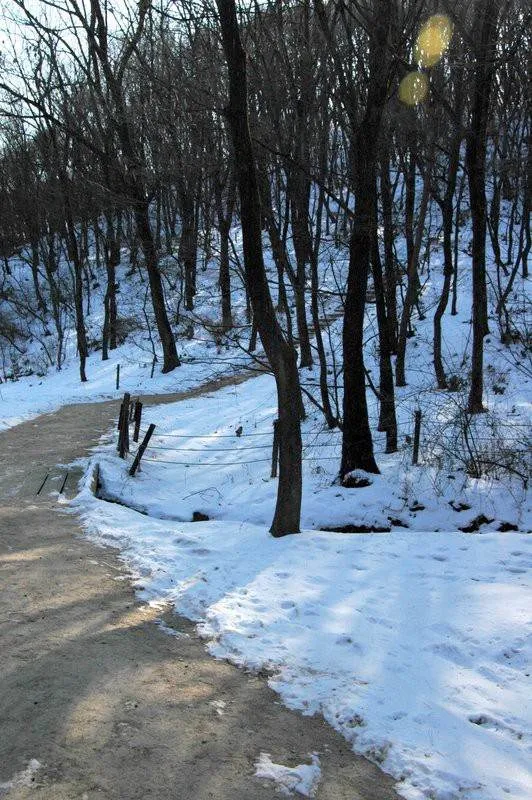
Most Joseon Dynasty tombs tend to have a hiking trail around the inside perimeter of the area, although winter probably isn’t the ideal time for hiking it. If you’re into walking pleasant places, however, it turns a short trip into a longer one.
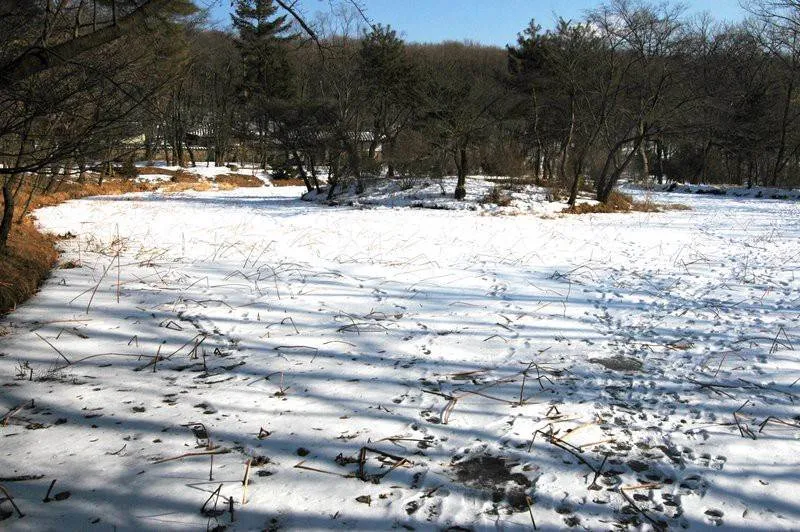
One of the ponds, frozen over courtesy of the winter.
Directions to Wonjong Jangneung: Take line 5 of the Seoul subway system to Songjeong station. Take exit 1 to street level, then walk 5 meters to the first bus stop. Catch bus 1, 2, 6, 7, 8, 9, 60, 60–3, 66, 69, 88, or 631 to the 사우삼거리 (sa-oo-sam-geo-ri) bus stop. Note it may also be named 김포시청 (Gim-po shi-cheong, or Gimpo city hall) on the bus routes. This should take about 20 minutes.
Here’s where it gets tricky. Walk to the next intersection, in the same direction as the bus was going. Cross the road to your left, then walk straight for about 300 meters to a T. Straight ahead should be Gimpo’s City Hall; you’ll need to walk around it to the left. Follow the sidewalk for about 500 meters (about 10 minutes) up the hill to the entrance. Admission 1,000 won; open from 6am — 6:30pm (March — October) or 6:30am — 5:30pm (November — February). Tickets close an hour before closing either way. Closed on Mondays.


